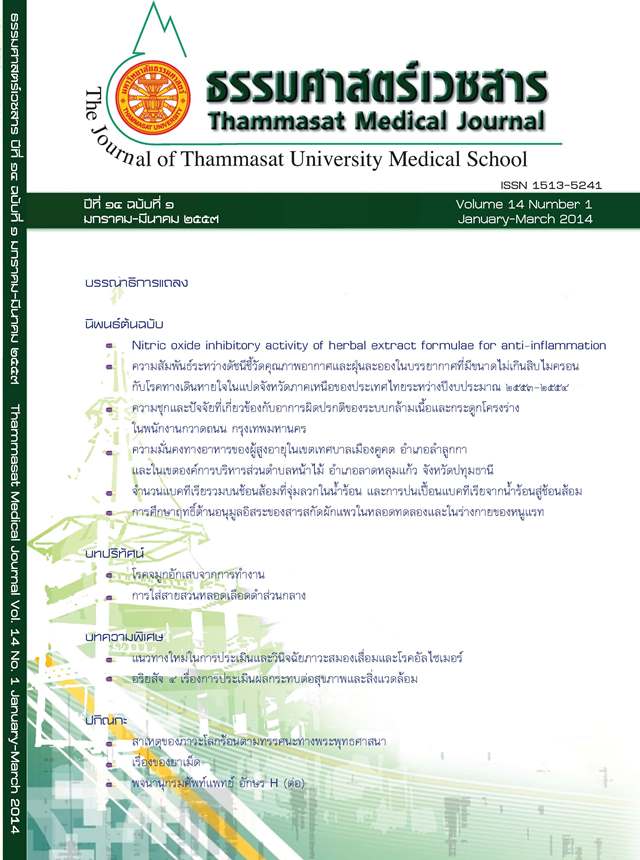Study of antioxidant activity of Polygonum odoratum L. extract in vitro and in vivo of rat
Keywords:
Antioxidant, Polygonum odoratum L., Heme oxygenase (HO-1), γ-Glutamylcysteine ligase (γ-GCL)Abstract
Introduction: Polygonum odoratum L. (P. odoratum) extract has been shown to possess antioxidant effects and containsseveral antioxidant compounds. The aim of this study was to determine the antioxidant activity and theeffect on antioxidant enzymes level of underlying of P. odoratum, a dietary and herbal plant commonlyfound in the Southeast Asia.
Methods: The ethanolic extract of P. odoratum was screened for its possible antioxidant activity through DPPH(2,2-Diphenyl-1-picrylhydrazyl) radical scavenging activity assays (DPPH). Moreover, study on cytoprotectiveenzymes induction were carried out using Sprague-Dawley rats given 400 and 800 mg/kgBW/day ofP. odoratum extract for 7 days. Liver was collected for determination of heme oxygenase (HO-1) andγ-glutamylcysteine ligase (γ-GCL) genes and protein expression which performed by QuantitativeReal-Time RT-PCR and Western blot analysis, respectively. Serum aspartate aminotransferase (AST), alanineaminotransferase (ALT) and creatinine (Cr) were measured as the indicator of liver and kidney function.
Results: The DPPH value of the potent antioxidants, P. odoratum extract, vitamin E and Butylatedhydroxytoluene(BHT) were 50.25 ± 0.61, 14.79 ± 0.78 and 19.71 ± 0.79 mg/mL, respectively. There was nohistopathogical change and serum AST, ALT and Cr were not elevated. Moreover, gene and proteinexpression of cytoprotective enzymes, heme oxygenase (HO-1) and γ-glutamylcysteine ligase (γ-GCL)were significantly increased in high dose-treated animals (800 mg/kgBW/day).
Discussion and Conclusion: P. odoratum exhibited weak antioxidant effect compared to pure antioxidant compounds. Nevertheless, P. odoratum could induce gene and protein expression of antioxidant enzymes. Consumption of P. odoratum may provide a benefit in increasing cytoprotective enzyme level. However, studies of long termconsumption of the extract and toxicology are required.
Key words: Antioxidant, Polygonum odoratum L., Heme oxygenase (HO-1), γ-Glutamylcysteine ligase (γ-GCL)


